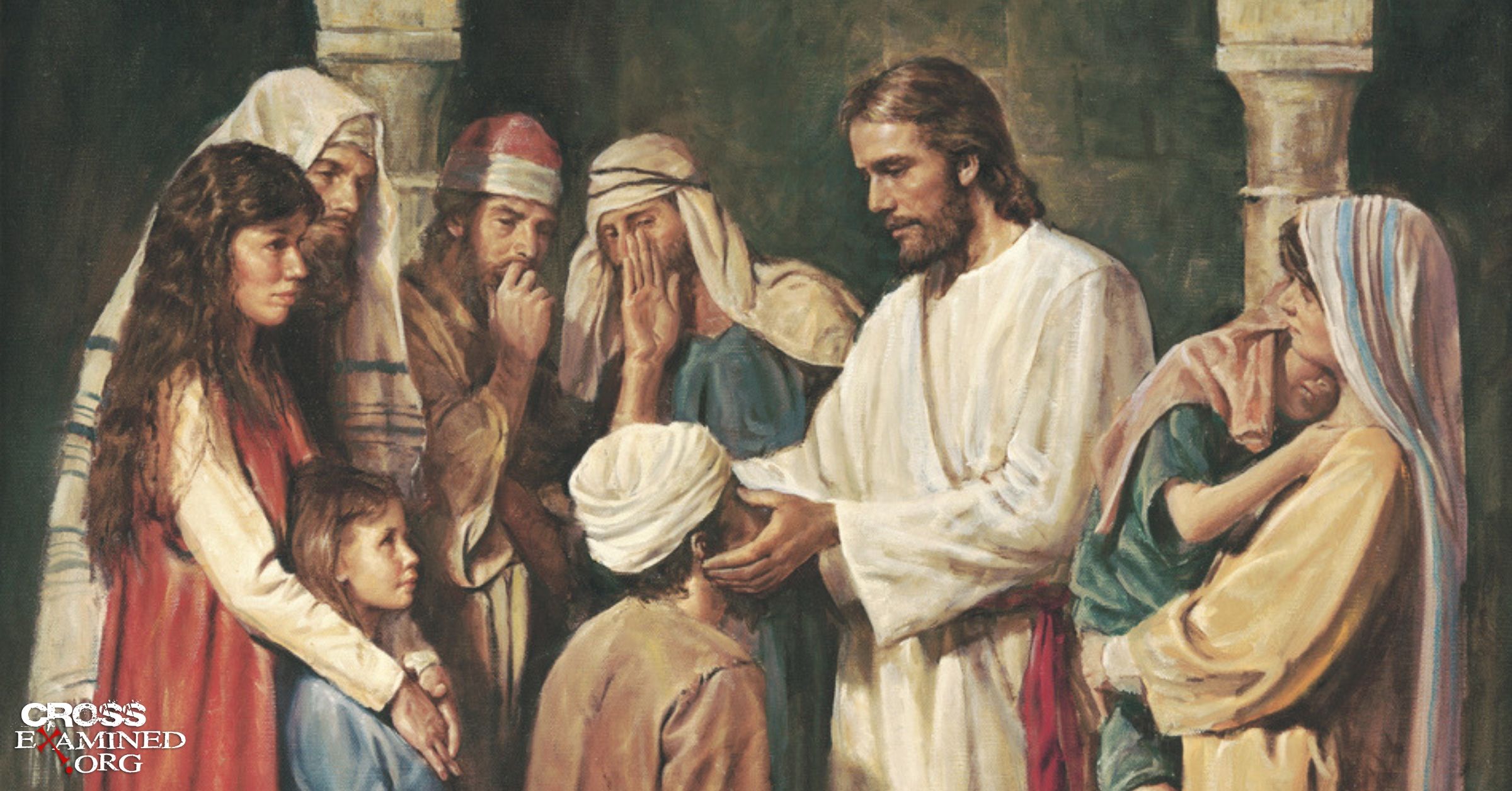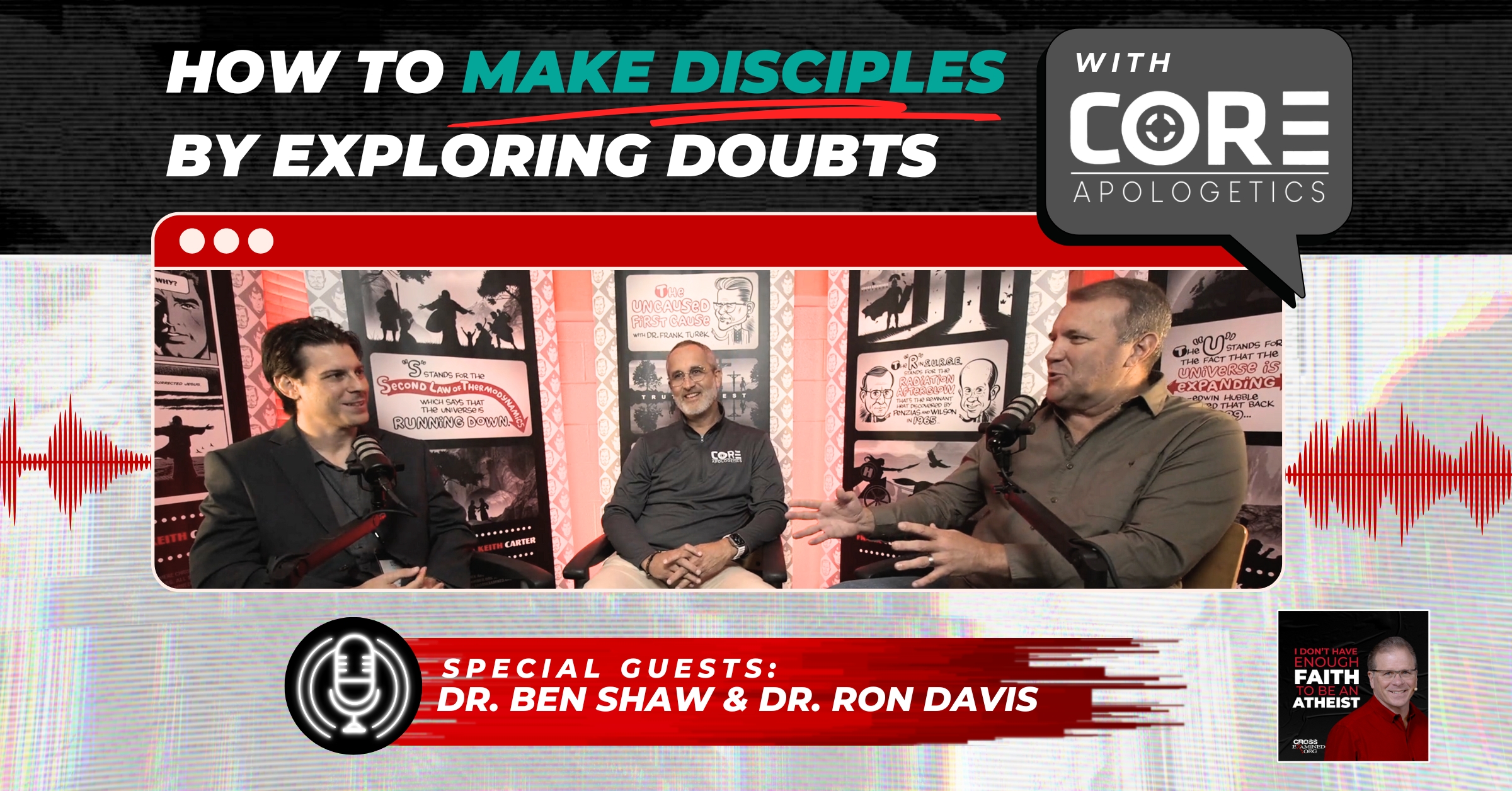Can We Know Anything about the Historical Jesus? Yes, and It’s Much More than You Think!
In 2000, I made the difficult decision to step away from my faith. I entered into what I call theistic-leaning agnosticism, one step removed from pantheism. I believed that some kind of God could possibly exist. However, I didn’t know that a person could know if that God really did exist and most certainly could not know anything about the historical Jesus of Nazareth. These doubts were brought on the claims of the Jesus Seminar who held that less than 14% of the sayings attributed to Jesus were actually his own. The Seminar claimed that the rest of the sayings were inventions from the apostles. Couple the Seminar with PBS’s show From Jesus to Christ, which claimed that the Christ of faith evolved over time from the Jesus of history, then one could see why I needed some serious answers. When I asked Christian leaders about how I could know if Jesus was accurately portrayed in the Gospels, I was met with scorn and hostility. Add to that the nepotistic hypocrisy I often saw, then stepping away from the faith was pretty easy.
However, everything changed in 2005. I was introduced to the writings of Lee Strobel, Josh McDowell, William Lane Craig, and Gary Habermas. This past week, my journey came full circle. I had the honor to have one of my apologetic heroes, Gary Habermas, once again as a professor. The class investigated the New Testament creeds, which is the material in the New Testament that predates the New Testament writings. It is thought even by skeptical scholars that many of these creeds date to no later than 35 AD when Paul met Peter and James in Jerusalem (Gal. 1:18-20). The NT creeds tell us much about the historical Jesus because this information is located at ground zero. The creeds tell us about the message of the earliest church, which in turn came from the historical Jesus of Nazareth. So, what can we know about the historical Jesus of Nazareth from these creeds?
Creeds Tell Us about the Nature of the Historical Jesus. As fascinating as it is, the creeds provide us with high Christology. In fact, the earliest church had the highest Christology. This decimates the claims that the church evolved the nature of Jesus from a prophet to a divine God-man over time. For instance, consider the Philippians hymn. The Philippians hymn notes that Christ Jesus “existing in the form of God, did not consider equality with God as something to be exploited. Instead, he emptied himself by assuming the form of a servant, taking on the likeness of humanity” (Php. 2:6-7a, CSB). The sermon summaries of Acts, all thought to be extremely early, denote the deity of Jesus as one who “has been exalted to the right hand of God” (Acts 2:33, CSB). Don’t forget about the Colossian’s creed where Christ is said to be the “invisible God, the firstborn over all creation” (Col. 1:15, CSB and see following Col. 1:16-20). One may say, “Okay, but this shows the church’s theology, not the historical Jesus of Nazareth.” In response, one must note that there is no historical presence of evolutionary development, not even legendary development. The earliest church held an extremely high view of Jesus. Therefore, Jesus of Nazareth must have taught something about his divine nature, backing them up with miraculous works.
Creeds Tell Us about the Life of the Historical Jesus. While the majority of the creeds focus on the death, burial, and resurrection of Jesus, the creeds do provide details pertaining to the life and ministry of Jesus of Nazareth. The creeds note that Jesus was born a descendant of David (Acts 13:23; Rom. 1:3). Jesus was noted to have been a Nazarene (Acts 2:22; 4:10; 5:38). Jesus of Nazareth performed numerous miracles (Acts 2:22; 10:38) and fulfilled several Messianic prophecies (Acts 2:25-31; 3:21-25; 4:11; 10:43). From the creeds, the researcher begins to see a similar pattern of Jesus of Nazareth’s life that is portrayed in the biblical narratives concerning him.
Creeds Tell Us about the Death and Resurrection of the Historical Jesus. The majority of the creeds are based around the earliest kerygma of the church—that is, the death, burial, and resurrection of Jesus. Most notably, 1 Corinthians 15:3-7 denotes the resurrection appearances of Jesus, even stating that 500 people witnessed the risen Jesus at one time (1 Cor. 15:6). The sermon summaries of Acts also provide the same formula in that Jesus lived, died, and rose again. The Acts 13 sermon summary even gives a nod to the empty tomb. For Paul’s early message stated that “When they had carried out all that had been written about him, they took him down from the tree and put him in a tomb. But God raised him from the dead, and he appeared for many days to those who came up with him from Galilee to Jerusalem, who are now his witnesses to the people” (Acts 13:29-31, CSB). The creeds denote the numerous witnesses who saw the risen Jesus. They sometimes provide details that other sources do not, such as Simon Peter’s private interaction with the risen Jesus (Lk. 24:34; 1 Cor. 15:5) and James’ private meeting with the risen Jesus (1 Cor. 15:7).
The early creeds are impressive in what they tell us about the historical Jesus of Nazareth. Some will skeptically hold that since the creeds speak of the miraculous and the divine that they must be thrown out. However, such attitudes show more of an anti-supernatural bias than they do a quest for historical truth. At the very least, these early creeds tell us what the earliest church believed about Jesus. At the most, the early creeds give a fascinating description of whom Jesus was, is, and forever will be. Even if we did not have the New Testament, the creeds would tell us everything we needed to know about the historical Jesus of Nazareth, who is the Christ of faith! The creeds tell the life-changing truth that Jesus has risen. Will you allow this truth to transform you?
Brian G. Chilton is the founder of BellatorChristi.com and is the host of The Bellator Christi Podcast. He received his Master of Divinity in Theology from Liberty University (with high distinction); his Bachelor of Science in Religious Studies and Philosophy from Gardner-Webb University (with honors); and received certification in Christian Apologetics from Biola University. Brian is currently enrolled in the Ph.D. program in Theology and Apologetics at Liberty University and is a member of the Evangelical Theological Society and the Evangelical Philosophical Society. Brian has been in the ministry for close to 20 years and serves as the Senior Pastor of Westfield Baptist Church in northwestern, North Carolina.
Original Blog Source: http://bit.ly/2ZALSAi











Leave a Reply
Want to join the discussion?Feel free to contribute!